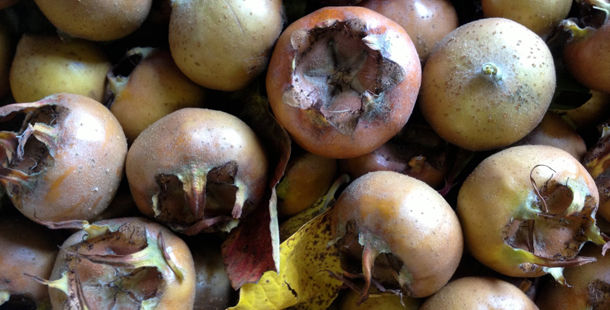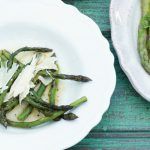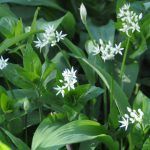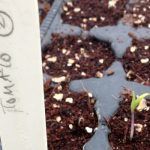The medlar cleanly scoops the prize for most esoteric harvest this week. I came across the name long before I ever encountered the plant itself. All I knew back then was that it was an unusual fruit tree and I filed the word away in my brain under mysterious archaic foodstuff, alongside things like metheglin and verjuice, neither of which I’ve ever seen in a shop or made myself.

I’ve never seen the fruit of the medlar for sale either for that matter but it used to be more widely eaten and many nurseries stock the tree, which is tolerant of a wide range of soils and has great ornamental value. Its habit is short and spreading with pleasingly crooked branches and fine autumn colour. Like the apple, it belongs to the rose family, and bears similar, though bigger, showy white or pink-tinged blossom in spring. I even find its botanical name – Mespilus germanica – beautiful, which probably means I should get out more.

The merits of the tree are an easy sell; the fruit less so, but bear with me. To be fair, it does look a bit weird. It resembles a large, flattened rose-hip four of five centimetres in diameter with golden russeted skin. At the centre is a recessed five-pointed star, around which project the distinctive remains of the flower’s calyx in the form of five curving horns (the little crown retained at the end of a pomegranate is the same thing). They remain rock-hard and inedible until the first frosts, which kick-start the process of softening and sweetening. Brown patches start to appear on the skin, at which point they should part company easily with the tree.
Before they can be eaten, the fruits must first blet; that is go beyond ripeness and start to rot. This is actually not unpleasant at all, since the skins are tough enough to contain the pulp, which in any case just smells a bit appley. The fruit are laid out, stalks uppermost, in a single layer somewhere cool (ideally in slatted trays), until they have softened completely. Many writers, Chaucer and Shakespeare among them, have used medlars figuratively to symbolise premature decay, or rudely punned upon their puckered appearance.

These days, bletted medlars are most commonly made into a jelly, which pairs very well with roast pork and game. Though there are hints of apple and quince in there, it has a flavour all of its own. The colour is gorgeous, ranging from gold to deep red. To find other uses requires delving into old recipe books. Medlar cheese, in the style of membrillo paste, was pressed into decorative moulds and served as a dessert in Victorian times. They were used as fillings for tarts and also baked whole, served up with sugar and cream. I find them quite palatable raw too, scooped out with a teaspoon (or even just squeezing the pulp out at the top of a stepladder whilst picking).

I won’t pretend that medlars are the most mind-blowing fruit you will ever eat but they have their place and they’re something I look forward to eating a few times each winter – all part of the diverse pleasures of eating seasonally. On that topic, I wish that pomegranates grew happily here. You may remember me writing about the single fruit that had set on the little tree in the pomegranate. Well, in the end, it grew bigger than a medlar, but not much. Small but perfectly formed, as they say.


















